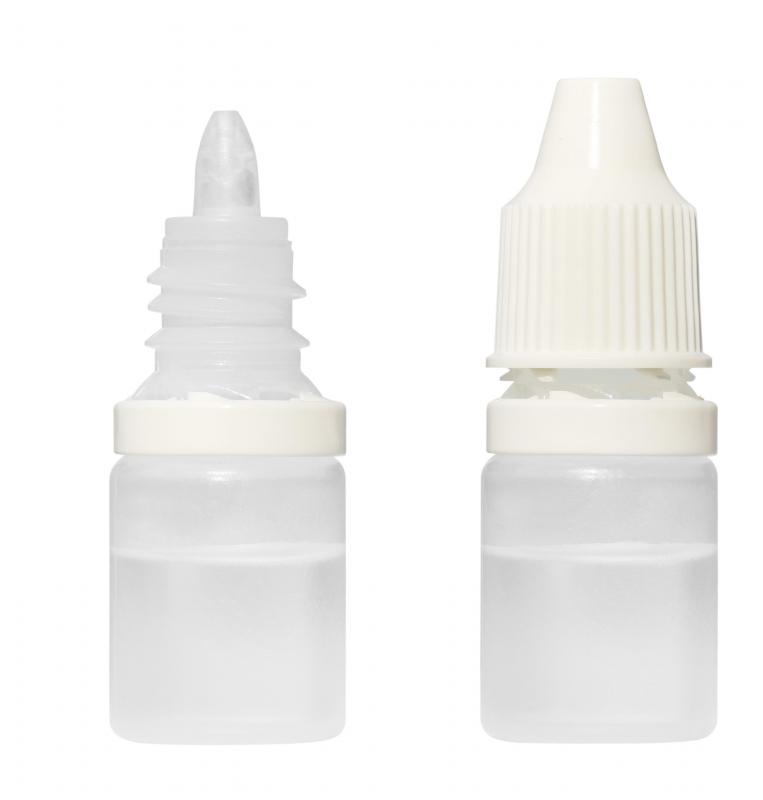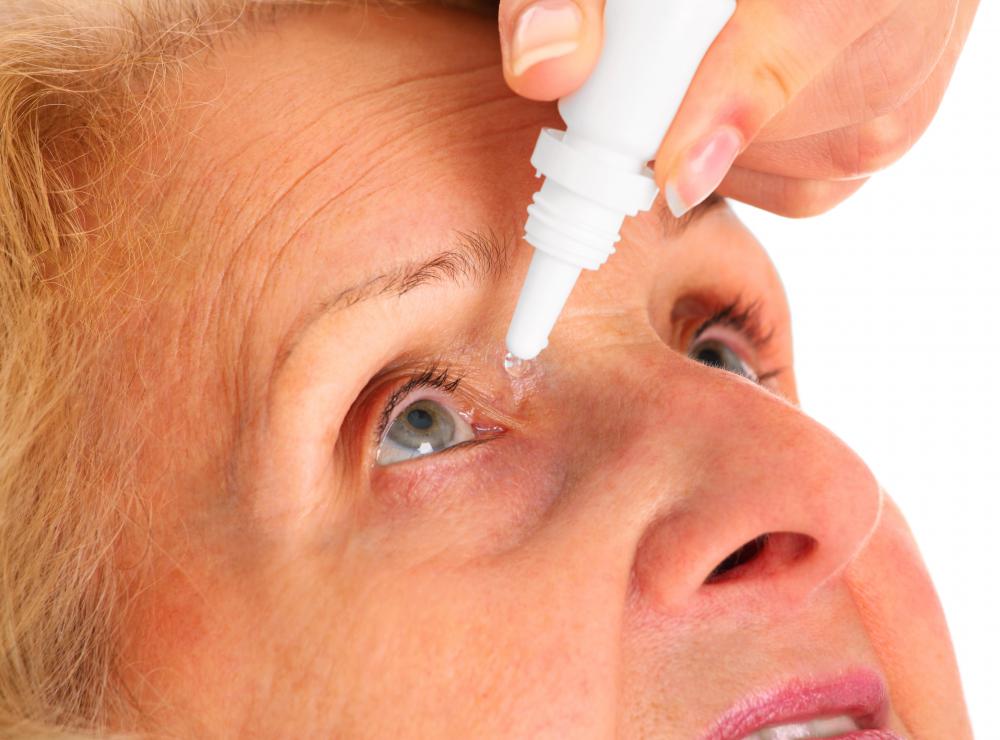At TheHealthBoard, we're committed to delivering accurate, trustworthy information. Our expert-authored content is rigorously fact-checked and sourced from credible authorities. Discover how we uphold the highest standards in providing you with reliable knowledge.
What Causes Pus in the Eye?
Pus in the eye is usually caused by infection, allergies, or environmental irritants. Infections within the eye are typically bacterial or viral, both of which present very similar symptoms. Pus in the eye that is caused by allergies or environmental irritants is typically short term, and will often clear up without medication if the person is removed from the location of the allergen or irritant.
Bacterial eye infections can occur deep within the tissue of the eye or on the surface of the eyeball. This type of infection typically occurs when the defense mechanisms of eye protection are not functioning properly. Blinking and tear production are the two main ways the eye protects itself from invading particles, and when the eyes are dry, not only is the tear film missing, but blinking action is also usually reduced.

Many people who have pus in the eye due to a bacterial infection also have reddened upper and lower eyelids. They may also have pain and itching in the infected eye, and may exhibit sensitivity to light. In many cases, these symptoms are more severe at night. In most cases, bacterial eye infections are treated with antibiotic eye drops.
A viral eye infection is caused by viral agents entering the eye, and this type of infection is considered highly contagious. Viral eye infections are usually contracted by coming into contact with the body fluids of someone who is already infected, though some research indicates that these infections might also be contracted by more casual contact. Some experts believe that viral eye infections can be spread from water in communal bathing systems such as swimming pools and hot tubs.

Symptoms of a viral eye infection are very similar to those associated with a bacterial infection. In addition to pus in the eye and excessive drainage, those who suffer from a viral eye infection may exhibit symptoms affecting their entire body. These sufferers often have elevated temperatures, chills, and body aches. In many cases, the entire eye will become red, which is why this type of infection is sometimes referred to as pink eye. Antibiotics do not usually work on viral infections, so doctors often prescribe steroid-based eye drops and cold compresses.

The large majority of cases involving pus in the eye are caused by allergies or irritants. The drainage and pus are the result of the eye attempting to rid itself of the foreign particles causing the irritation. Pollen and makeup are generally considered two of the most common causes of allergic and environmental eye irritants.
AS FEATURED ON:
AS FEATURED ON:
















Discussion Comments
My cat has chronic discharge and pus in her eyes. It's not eye infection pus because the pus is clear. But when it sits near her eye for a while, it turns brown. The vet hasn't suggested any treatment. He said that it's allergic and told me to just wipe her eyes when I see pus on them.
I've been wiping her eyes a few times every day, but the pus is still there. I even changed her litter a few times to see if dust from the litter was causing it. Her discharge lessened with some types of litter but never went away completely.
I even tried allergy eye drops made for infants and it too made no difference.
I want to help her but I don't know what else to do. I feel so helpless.
Some people do the same thing with breast milk and claim that it works. I personally think that hot tea or water works fine. If you have lubricant eye drops at home (the one that's close to natural tears), you can use those as well.
If the infant's eye becomes pink and swollen at any point, that's conjunctivitis in the eye. The doctor can prescribe medicated eye drops in that case.
Why would an infant have pus discharge from an eye?
My mother-in-law told me to apply breast milk to my baby's eye to get rid of the pus. Is this a good idea?
Post your comments